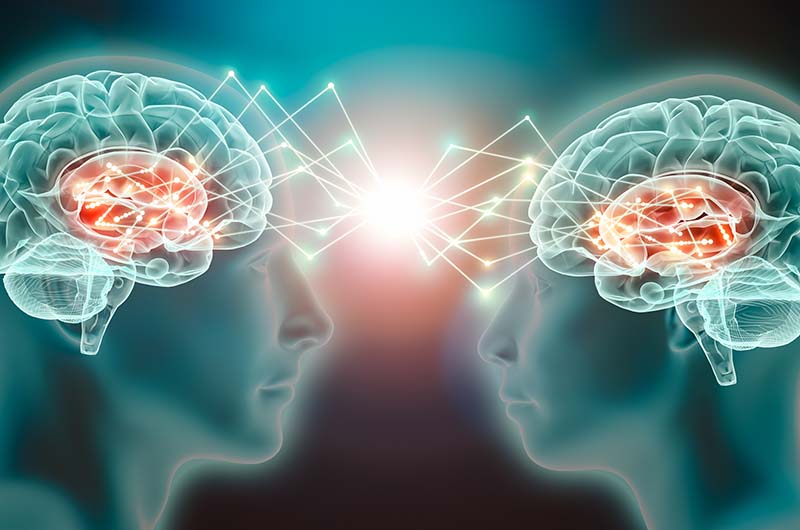“As research in neuroscience expands, the linkages with leadership and leadership development are providing fertile grounds for the development of better and better tools and techniques that allow us to increase the managerial and leadership productivity and effectiveness.”
– Ringleb & Rock, 2009
Consider the question: What is the main influence of leadership behaviour? While organisational culture, incentive schemes and relationships matter, there is now substantial agreement that the main driver of most human behaviour is located in the mindset of the individual.
Leaders’ thinking patterns about work (work mindset) are key to understanding the differences between high performing leaders and those who are not – but who have the potential to become high performing.
What is new in our understanding of leadership behaviour comes from scientific findings from the field of neuroscience which reveals that thinking patterns are themselves stimulated by the neural circuitry of the brain. This is one reason why it is so hard for people to change as it takes time for neural learning to occur.
“Taking on new patterns of behaviour often feels unfamiliar and painful because it means consciously overriding existing neural circuits that are familiar and comfortable. This helps explain why organisational change requiring different behaviours is so difficult to achieve”.
What is clear from the findings of neuroscience is that if we want people’s behaviour to change and move towards higher levels of performance and to be sustainable, significant changes in brain activity must occur.
Some have argued that many people are unprepared to manage the emotional component of change – an aspect of brain activity that can appear in some people to be hard-wired.
Fortunately, it has been discovered that the neural connections in the brain are highly plastic and can be created by changing the way we think about things. This means that powerful thought patterns of leaders and managers can be changed with new neural pathways being developed that drive high performance leadership behaviour.
Learning and development programs need to be designed with the brain in mind if they are to be effective in helping people develop the self-reflection and capacity for changing patterns of ineffective thinking that give rise to unproductive workplace behaviour.
Daniel Siegel, one of the leaders in the field, describes this capability as mindsight:
“Mindsight is a kind of focused attention that allows us to see the internal workings of our own minds. It helps us to be aware of our mental processes without being swept away by them, enables us to get ourselves off the autopilot of ingrained behaviours and habitual responses, and moves us beyond the reactive emotional loops we all have a tendency to get trapped in…. Neuroscience supports the idea that developing the reflective skills of mindsight activates the very circuits that create resilience and well-being and that underlie empathy and compassion as well.” (2010)
The High Performance Mindset at Work programs are specifically designed to increase people’s awareness of how the mind operates at its best and when and why it can operate at its worst. We focus on helping people recognise the choices they have in the thought patterns they bring to their work and how thought patterns influence their feelings, behaviours, choices, productivity and well-being. Participants become aware of a range of different attitudes and associated patterns of thinking that characterise the mindset of top performers. They are also provided with tools to recognise, challenge and change counter-productive ways of thinking to more rational and positive patterns that come to direct workplace behaviour.
Through all our HPMW programs, people are given sufficient time and insight to make the changes in their thinking that establish and strengthen new neural learnings needed for change and high performance.
A recent study of the HPMW Leadership Program (Bernard, 2014) conducted at the Bastow Institute for Educational Leadership has revealed significant increases in leader self-awareness and self-reflection, positivity, confidence and the ability to stay calm under pressure –hallmarks of the rational mind at work. Such changes have been brought about by the HPMW learning and development program we designed to re-program neural circuitry.
Experience shows our L&D programs produce powerful workplace behaviour change in leaders who:
- develop conscious awareness of the importance of mindset to their workplace performance;
- become motivated and shift thinking to positivity and rationality, as personified in all top performers; and
- are able to move off an “autopilot” of ingrained, negative habits, towards greater effectiveness and impact.
So, if you are investing in programs that seek to develop high performance in your leaders or your workforce in general, it is critical that you also invest in preparing brains for high performance.
References
Bernard, M.E. (2014). Strengthening the capacity of school leaders: The mindset of high performance. Evaluation Report for the Bastow Institute of Educational Leadership, North Melbourne (Vic.).
Ringleb, A.H., & Rock. D. (2009). Neuroleadership in 2009. NeuroLeadership Journal, 2, 1-7.
Rock, D., & Schwartz, J. (2006). The Neuroscience of Leadership. Strategy + Business 43, 72-82.
Siegel, D. (2010). Mindsight: The new science of personal transformation. New York: Bantam Books.




